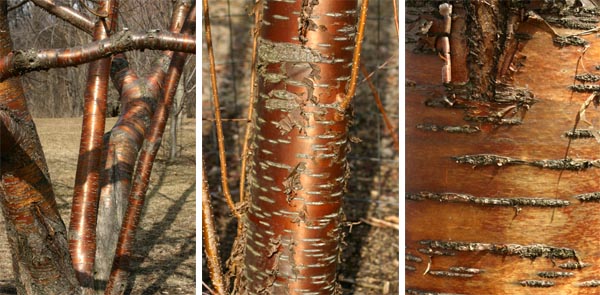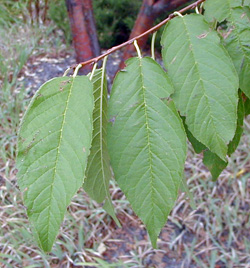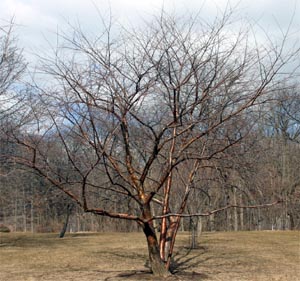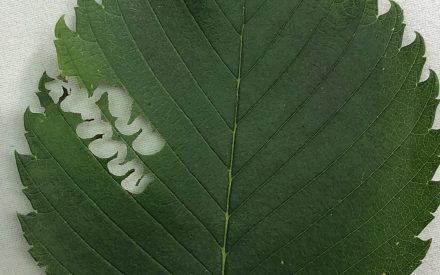
Amur cherry or amur chokecherry (Prunus maackii) is a tough but attractive small tree. Its name comes from the Amur River that flows for 1,000 miles as the natural boundary between China and Russia and to honor the 19th century Russian naturalist Richard Karlovich Maack, who discovered the plant while exploring the Russian Far East. Native to Korea, Siberia and Manchuria, it is hardy in zones 2-9, making this a valuable addition to the landscape for northern gardeners. Although it is capable of growing to over 50 feet tall, it normally doesn’t get more than 30 feet tall in cultivation.
One of the most distinctive ornamental features of this deciduous tree is the beautiful cinnamon-brown exfoliating bark. Most prominent in winter, when the leaves have fallen from the branches, the bark has almost a bronze metallic sheen along with light-colored horizontal dashes and rings left by the papery, peeling layers.

In late spring small, fragrant, creamy- white flowers arranged in drooping, 2-3″ racemes cover the leafed-out tree.

These are followed in mid- to late summer by small, long-lasting black fruit that are attractive to birds or can be used to make jams and jellies. The medium-green leaves turn a nondescript yellowish color in autumn and often drop early.
Plant amur cherry in full sun or partial shade. It does best in moist, well-drained soil high in organic matter but it is also moderately salt tolerant and can withstand some neglect and abuse – the city of Calgary (Canada) started planting them as boulevard trees some years ago, where they have survived quite well. This tree has a moderate growth rate and can be grown as a single or multi-trunked tree. It has a pyramidal shape when young that becomes rounded with age. Pruning out the lower branches allows the attractive bark to be more visible when in leaf.

Amur cherry tends to have fewer problems than many Prunus (plants in this genus generally have numerous disease and insect problems and also tend to be short-lived) and is longer lived (30-50 years). It is somewhat prone to black knot , a fungal disease that produces grotesque blackish swellings on branches but otherwise has few pest problems in the colder areas of the Midwest. Other common cherry pests include borers, scale, aphids, tent caterpillars, canker and leaf spot.
Use P. maackii as a specimen tree in areas where it can be appreciated for the bark and silhouette in winter. It is ideal for the small yard because of its smaller size. This plant has been underused in the United States and is not commonly available in standard nurseries. At least one cultivar, Goldrush® (P. maackii ‘Jefree’) is offered. Developed from an open pollinated seedling (which may actually be a hybrid with another Prunus species), this improved selection has improved resistance to frost cracking and appears to be resistant to black knot.
– Susan Mahr, University of Wisconsin – Madison
Latest from Wisconsin Yard & Garden
Ask Your Gardening Question
If you’re unable to find the information you need, please submit your gardening question here:





 Silver Leaf
Silver Leaf Red Star Rust
Red Star Rust Tree Species Recommended for Fall Planting
Tree Species Recommended for Fall Planting Elm Zigzag Sawfly
Elm Zigzag Sawfly


